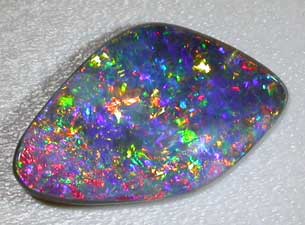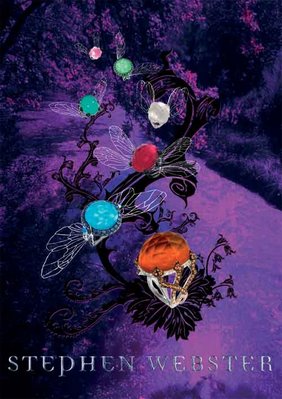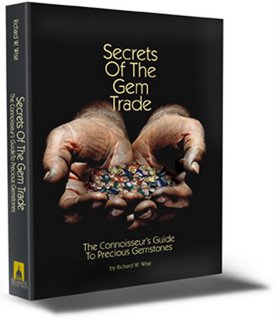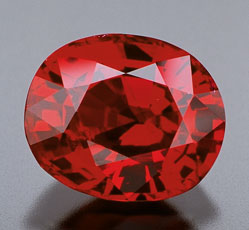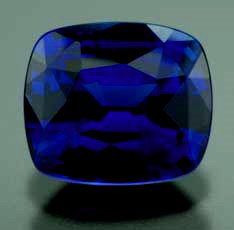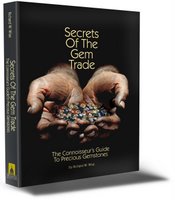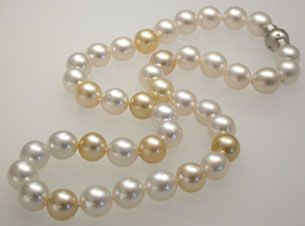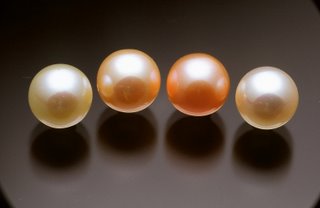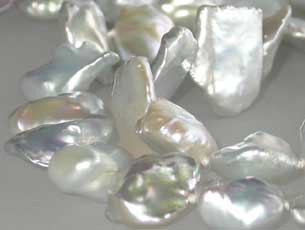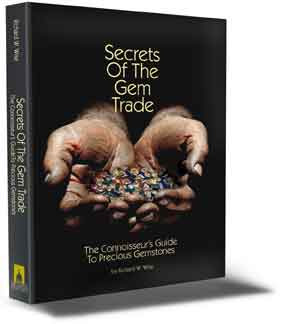LIGHT UP YOUR LIFE
by Richard W. Wise, G.G.
© 2006
What is the best lighting environment to view gemstones? In part I of this post I discussed the various lighting options and the pros and cons of each. In part II I will write about the lighting some of the world’s foremost gem experts and connoisseurs choose to both view and evaluate gemstones.
Among the experts opinions differ somewhat as to which “daylight” Kelvin temperature is best but each accepts daylight as the standard. Stephen Hofer one of the world’s most respected authorities on colored diamonds, maintains that 5500K works best for colored stones and 6500K is best for diamonds both white and colored. In his lab, which is dedicated to the evaluation of fancy color diamonds, all grading work is done under 6500 Kelvin fluorescents. C. R. Beesley, President of American Gem Labs in
In 1994 GIA completely revamped its color grading system for colored diamonds, shifting from Veralux, a so-called low UV lamp rated at 6200K, (see Secrets Of The Gem Trade, p.60, fn) which remains its standard for grading colorless diamonds to a 6500K average daylight fluorescent bulb for grading colored diamonds. The lamp is manufactured by Kollmorgen Corporation. GIA also uses a 6500K for general research purposes. The Institutes use of light of this Kelvin temperature is in no way an endorsement of the use of this type of lighting by jewelers. According to James Shigley, GIA’s Director of Research, 6500 was chosen because it is a recognized standard used by color scientists. Little or no thought was given to enhancing the beauty of gemstones.
Incandescent and quartz halogen lamps can be made to resemble daylight with the addition of a blue filter. Duro-Test currently markets a “super-white halogen” that does the same job. I conducted a series of experiments with the Duro-Test product and found that this type of lighting does wonderful things for blue sapphire, aquamarine and amethyst, but does nothing to reduce the muddy look in blue and green tourmaline. “Super-white” induces a distinctly overblue look in rubies and tanzanite takes on an odd blue/violet multi-color effect quite dissimilar to its appearance in any other lighting environment. In diamond, “super-white” overly enhances the yellow/blue luster of the stone.
The problem!, filtered light makes for unintended results. Unfiltered fluorescent lighting can exhibit a relatively balanced spectrum when graphed on what scientists call a “Relative spectral power distribution” curve. Filtered lamps show spikes in this curve which are areas of color deficiency.
Another type of lighting called Neodymium is currently being marketed as a “full spectrum incandescent”. According to Roger Schoenfeld, a lighting specialist with Durotest, this is really a standard yellowish incandescent incased in a special glass invented in
Compared to daylight, neodymium works well with ruby, amethyst, emerald and tsavorite garnet. It is no worse with blue and green tourmaline which seems to be a true day stone, i.e. it looks its best in daylight and in daylight fluorescent 5000-6000K. Pink & red tourmalines do fine in Neodymium “full spectrum”, it does not produce the brownish secondary hue that most pinks exhibit in standard incandescent but, rather makes them look violetish. Tanzanite looks about the same as with quartz light; bluer than stan
dard incandescent and without the otherworldly quality of “super-white”.
Three or four years ago, Tailored Lighting introduced a 4700 Kelvin MR-16 lamp which has the highest Kelvin temperature of any incandescent bulb and may be the best solution yet for interior lighting. The new Solux lamp uses a new type of reflector to boost the quartz halogen lamp into the daylight range. This technology produces lighting with a fairly even power distribution curve (CRI) that shows no spikes in either the red or blue areas of the visible spectrum.
In a short, down and dirty test, Solux worked well with tourmaline, reducing the muddiness produced by all other incandescent light sources. Sapphire and ruby also benefited from this type of lamp, showing they’re colors in true daylight fashion. Solux also improved the diaphaneity of tanzanite. On the down side, Solux appeared to add a gray component to aquamarine and pink topaz which reduced the saturation and flattened the color.
Changing lighting environments have always been a problem for both buyers and sellers. You buy in one light, sell in another. Traditionally dealers who do extensive buying outside their offices have relied upon comparison stones, stones of well known color, which they carry or wear on buying trips.
I use two fixtures with twin four foot fluorescent lamps to give an overall daylight environment combined with several of the new Solux MR-16 4800K quartz halogen lamps in my own laboratory which doubles as a salesroom and consider this combination to be the closest possible to a true daylight environment. I use Duro-Test Vitalite in one fixture and Kollmorgen 6500K average daylight in the other. The use of the 6500K is to compensate for the 4800K Solux, to kick up the Kelvin temperature of the overall environment towards 5500K.
The combination of of daylight fluorescent with Solux works acceptably across the spectrum of gemstone colors. The fluorescents create an overall daylight environment and the Solux MR-16 provides the punch. This lighting temperature gives a balanced daylight color rendering when compared to New England north daylight. Several years ago, a German firm, System Eikhorst, introduced a lighting system based, in part, upon my recommendations. It includes both daylight fluorescent and Solux fixtures.
When making a purchasing decision it is important to identify the light source you are viewing the stone and to view the stone in as many lighting environments as can be found. Regardless of my geographic location at the time, I always compare each stone in daylight and 3200K incandescent to see how the stone reacts at both ends of the lighting spectrum.
If a consistent workable colored stone evaluation system is ever created, the lighting environment will of necessity be standardized. To achieve reproducible results, there are three variables; the observer, the gem observed and the lighting environment. The standardization of the lighting environment will remove one variable. This leaves one remaining variable, the observer. Either we must accept some nuances of subjectivity or build a gem grading robot replace to connoisseur’s eye and dictate our taste.



